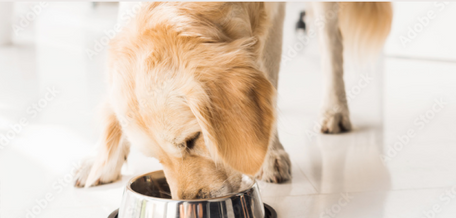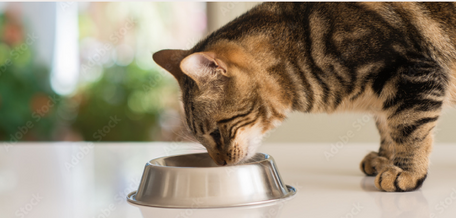Raw Diet for Cats: Why Choosing the Right Meat Matters
A raw diet for cats is based on their natural, ancestral eating habits—high in protein, rich in nutrients, and free of fillers. Choosing the right cat raw food is key to ensuring your feline receives complete and balanced nutrition while considering the nutritional appropriateness and safety of such diets. Each meat cut contributes unique benefits that support your cat’s muscle strength, bone health, and immune function. From calcium-rich chicken necks to taurine-packed beef heart, understanding what goes into your cat’s bowl can make all the difference in their health and longevity. In this article, we’ll break down the best cuts of raw meat for cats and why rotating proteins matters. Plus, we’ll show you how BJ’s Raw Pet Food makes it easy to feed your cat high-quality, species-appropriate meals.

Key Takeaways
-
Chicken necks: Protein and calcium rich, good for bone and muscle.
-
Rabbit legs: Lean, hypoallergenic, good for cats with food sensitivities.
-
Beef heart: Taurine, iron and zinc rich, good for heart and eyes.
-
Balanced diet: Rotating different cuts is key to a well rounded raw diet for cats.
-
BJ’s Raw Pet Food has top quality raw meat options for your cat.
What is a Raw Diet for Cats?
A raw diet for cats mimics the evolutionary diet of wild felines, whole, unprocessed ingredients. Since cats are obligate carnivores, they thrive on a diet primarily made of meat, which includes:
-
Muscle Meat (e.g. chicken, rabbit, turkey)
-
Organ Meats (e.g. liver, kidney, heart)
-
Raw Edible Bones (e.g. chicken necks or wings)
But while wild cats thrive on such diets, domestic cats have different nutritional needs that may not be met by raw foods. It’s important to understand the risks and benefits of raw diets and ensure any homemade diet is properly formulated to meet the specific needs of domestic cats.
This diet provides natural sources of taurine, calcium and B vitamins without synthetic additives.
For more information on how raw diets benefit feline health, check out our blog: The Science Behind Raw Meat Diets for Cats
Nutritional Needs of Cats
Cats are obligate carnivores, their diet must be high in animal derived protein to thrive. Unlike omnivores, cats have specific nutritional needs that must be met to be healthy. These include:
-
High Quality Protein: Essential for muscle development and overall health, protein should come from animal sources like meat, fish and poultry.
-
Moderate Fat: Animal fats provide energy and support cell function. They also help in the absorption of fat soluble vitamins.
-
Limited Carbohydrates: Cats have limited ability to digest carbohydrates, so their diet should be low in carbs.
-
Essential Vitamins and Minerals: Vitamins like A, D, calcium and phosphorus are crucial for various bodily functions including bone health and immune support.
-
Adequate Moisture Content: Cats get most of their hydration from their food, so a raw diet with high moisture content is beneficial.
A well formulated raw diet for cats should include a variety of ingredients to meet these nutritional needs. This can include raw meat, fish, eggs and organs, with supplements like fish oil and vitamin E to ensure a complete and balanced diet. By providing a range of raw foods you can help your cat be at their best.
1. Chicken Necks: The Best Source of Calcium and Protein

Nutritional Breakdown:
Chicken necks are a great source of protein and natural calcium due to their bone content. Adding raw chicken necks to your cat’s diet helps with strong bones and teeth and provides a rich protein source for muscle health. The soft, meaty bones in chicken necks also help with dental hygiene as chewing on the necks scrapes away plaque and tartar.
Chicken necks are particularly good for healthy adult cats as they are nutritionally balanced and complete.
Also, chicken necks contain glucosamine and chondroitin which are known to support joint health and mobility, especially good for older cats or cats with joint issues. Adding chicken necks to a raw diet for cats is a great way to introduce natural sources of nutrients without relying on supplements.
Nutrient Content per 100g:
-
Protein: 15g
-
Fat: 5g
-
Calcium: 300mg
BJ’s Raw Chicken Necks have the perfect balance of meat and bone, making them a great choice for your cat’s raw diet. They provide the calcium for strong bones and teeth and promote dental health through natural chewing. Sourced from high quality, hormone free chicken, BJ’s Raw Chicken Necks are a convenient and nutritious addition to your cat’s meal plan.
2. Rabbit Legs: Lean and Hypoallergenic

Nutritional Breakdown:
Rabbit legs are lean protein, perfect for cats with food sensitivities. They are low in fat and high in vitamins like B12, for the nervous system and energy. This hypoallergenic option fits into any raw diet for cats, especially those that require a leaner protein source.
While raw rabbit legs are good, cooked food can also improve the nutritional value of some ingredients, especially those that are harmful in their raw form. A well formulated homemade diet that includes cooked food can meet the nutritional needs of cats when prepared with the guidance of a veterinary nutritionist.
Nutrient Content per 100g:
-
Protein: 21g
-
Fat: 5g
-
Iron: 2.5mg
-
Vitamin B12: 6.5µg
BJ's Raw Rabbit Legs have a natural taste that cats love, sourced from ethically raised rabbits. Adding rabbit to your cat’s diet reduces potential allergic reactions and enriches their raw meat for cats meal plan.
3. Beef Heart: A Nutrient Powerhouse

Nutritional Breakdown:
Beef heart is an organ meat packed with taurine, an essential amino acid for heart and eye health. It’s also rich in iron, zinc and CoQ10, vital for energy production and immune system. Including beef heart in your cat’s raw diet ensures they get these essential nutrients. As a healthy food option, beef heart provides a balanced and complete diet that meets the unique needs of cats.
Nutrient Content per 100g:
-
Protein: 20g
-
Taurine: 0.1g
-
Iron: 2.5mg
-
Zinc: 4mg
-
CoQ10: 0.5mg
BJ's Raw Beef Heart is a great addition to your cat’s meals, packed with essential nutrients in every bite. Taurine rich, it’s a must have in a raw meat for cats diet.
4. Combining Cuts for a Balanced Diet

To keep your cat healthy, you need to rotate different cuts of meat. Muscle meat (chicken and rabbit), organs (beef heart) and bones make up a balanced raw diet for cats. But remember to differentiate between homemade raw diets and commercial food, as commercial food is formulated to be nutritionally adequate and safe under the guidance of a veterinary nutritionist. Here’s a suggested ratio to follow:
Suggested Ratios for a Balanced Diet:
-
Muscle Meat: 80%
-
Organ Meat: 10%
-
Bones: 10%
BJ’s Raw Pet Food has convenient bundles that include various meats, making it easy to feed a balanced diet to your feline friend.
Safety Considerations for Raw Diets
While raw diets for cats have many benefits, they also come with some safety risks that pet parents need to be aware of:
-
Bacterial Contamination: Raw meat, poultry and eggs can harbour harmful bacteria like Salmonella and E. coli that can cause illness in cats and humans. Proper handling and storage is key to minimising this risk.
-
Nutritional Deficiencies: If not well formulated, a raw diet can lead to deficiencies in essential vitamins and minerals. Ensure the diet is balanced and complete.
-
Choking Hazards: Raw bones can be a choking hazard and may cause intestinal blockages or splintering leading to serious health issues.
-
Allergic Reactions: Some cats may be allergic to certain ingredients in raw diets, like beef or chicken, and may react adversely.
To minimize these risks, handle raw food safely, choose a well formulated raw diet and consult with a vet before making any changes to your cat’s diet. By doing so, you can give your cat the benefits of a raw diet while ensuring their safety and well being.
Preparing Raw Cat Food Safely
Preparing raw cat food safely requires attention to detail and commitment to proper food handling practices. Here are some tips to prepare raw cat food safely:
- Handle Raw Food Separately: Always handle raw meat, poultry and eggs separately from other foods to prevent cross contamination.
- Wash Hands Thoroughly: Wash your hands with soap and water before and after handling raw food to reduce the risk of spreading bacteria.
- Clean and Disinfect Surfaces: Clean and disinfect all surfaces and utensils that come into contact with raw food. Use a dedicated cutting board and utensils for raw food preparation.
- Proper Storage: Freeze raw meat, poultry and eggs until ready to use to prevent bacterial growth. Thaw frozen raw food in the refrigerator or microwave, not at room temperature.
- Avoid Feeding Raw Food to Vulnerable Cats: Cats with weakened immune systems, pregnant or nursing cats should avoid raw diets due to higher risk of bacterial infection.
By following these guidelines, you can minimize the risks associated with raw diets and feed your cat a safe and healthy meal. Proper food safety practices will give you confidence to feed your cat a raw diet that supports their health and well being.
Conclusion
Feeding a raw diet for cats is about more than just raw meat—it’s about delivering balanced nutrition through muscle meat, organs and bones. Cuts like chicken necks, rabbit legs and beef heart each play a crucial role in supporting your cat’s health. With the right rotation and sourcing, you can feed a meal plan that mirrors nature’s intention.
At BJ’s Raw Pet Food, we make it easy to build a complete and balanced raw diet for cats with our ethically sourced, vet recommended products.
Check out our full range of raw meat for cats and our guide to fresh food for cats to help your feline thrive—naturally.
Explore BJ’s range of raw meat products today to feed your cat the balanced raw diet they deserve.
FAQs
What types of raw meat are good for cats?
Cats can eat various raw meats. Good options include chicken, beef, rabbit and fish. Each has its own health benefits.
Do I need to add supplements to my cat’s raw diet?
Talk to your vet. While a balanced raw diet can provide many nutrients, your cat may still need some extra vitamins or minerals.
How can I ensure my cat gets all the nutrients it needs?
To keep your cat healthy, feed different meats, organ meats and bones. Consult a vet or pet nutritionist to create a meal plan.
How do I transition my cat to a raw food diet?
Start by mixing a small amount of raw food with their current food. Gradually increase the raw portion over a few weeks and watch for any digestive issues.
What are the benefits of feeding raw meat to cats?
Feeding raw meat can improve digestion, reduce allergies and healthier skin and fur. Many owners notice their cats have more energy and overall better health.
Is a raw meat diet enough for my cat?
No, cats need more than just meat. A balanced diet includes meat, bones and organ meats to provide all the nutrients.




















